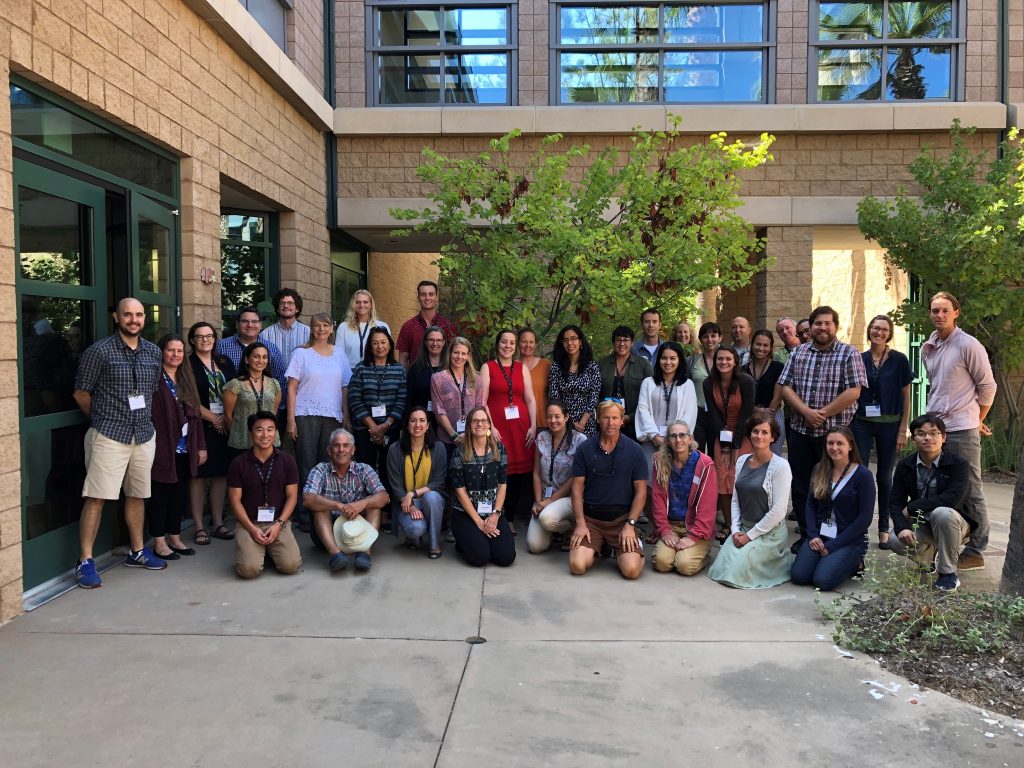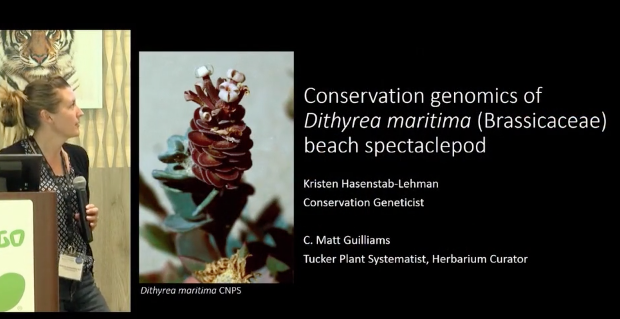
Kristen Hasenstab-Lehman, C. Matt Guilliams, Santa Barbara Botanic Gardens Dithyrea maritima (Davidson), or beach spectaclepod, is a dune specialist endemic to coastal dunes from central California, United States, to northwestern Baja California, Mexico. Individuals of this perennial herb spread by rhizomes, forming a diffuse colony of ramets, each terminating in rosette of 1 to several fleshy leaves, […]
Read More…
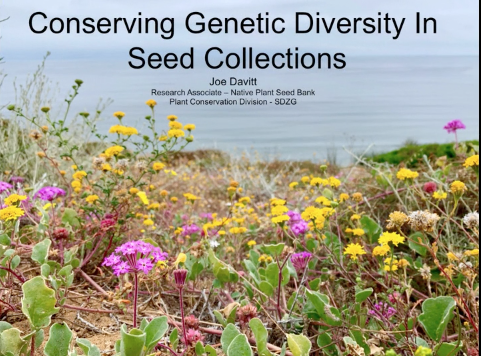
Joe Davitt, Institute for Conservation Research, San Diego Zoo Global Maintaining a plant species’ genetic diversity can contribute to adaptive potential, prevent inbreeding effects, and potentially preserve traits such as drought tolerance and disease resistance, all of which are critical in a changing climate. Seed collections are often the best method of conserving the genetic diversity of rare plant populations ex-situ, […]
Read More…
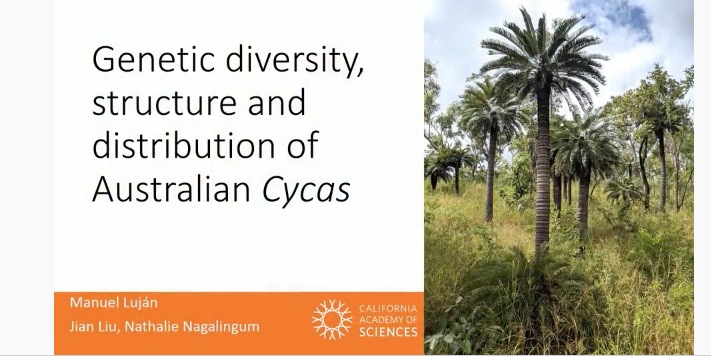
Manuel Luján, Jian Liu, Nathalie Nagalingum, California Academy of Sciences, Kunming Institute of Botany, Chinese Academy of Sciences Rare plant species exhibit narrow geographic distribution and are often considered to have smaller populations and lower levels of genetic diversity compared to their more common relatives. The genus Cycas includes about 117 species, 32 of which are […]
Read More…
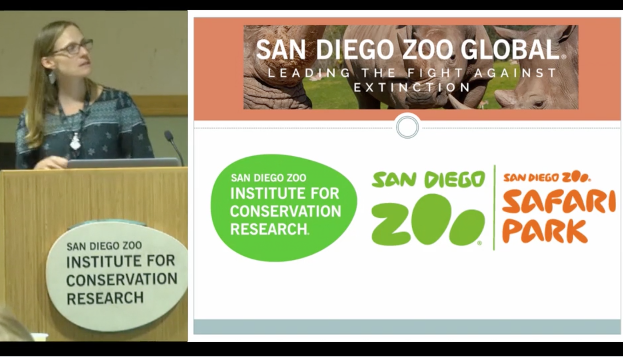
Christy Powell, San Diego Zoo Global San Diego Zoo Global’s Christy Powell opens the 2019 Plant Genetics Conservation workshop at San Diego Zoo Global with a welcome to participants, some background on San Diego Zoo Global, and an inspirational story about a fern that has benefitted from conservation efforts. […]
Read More…
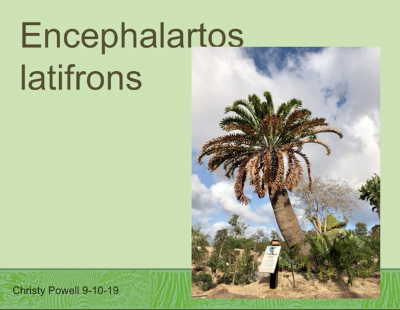
Christy Powell, Brian Dorsey, San Diego Zoo Global, Huntington Botanical Garden As the most endangered group of plants on the planet, cycads (Cycadales) face a number of threats to their continued existence. Efforts to preserve these iconic plants (in situ reserves and ex situ collections) could benefit greatly from a better understanding of population genetic […]
Read More…
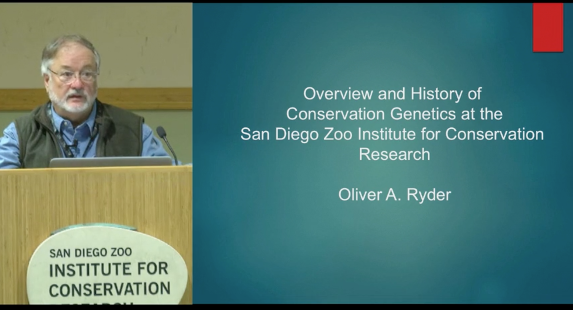
Oliver A. Ryder, Director, Conservation Genetics, Kleberg Endowed Chair, San Diego Zoo Institute for Conservation Research In January, 1975 genetics studies commenced at the San Diego with group of researchers who would become the core of CRES, the Center for Reproduction of Endangered Species – now the San Diego Zoo Institute for Conservation Research. Founded […]
Read More…
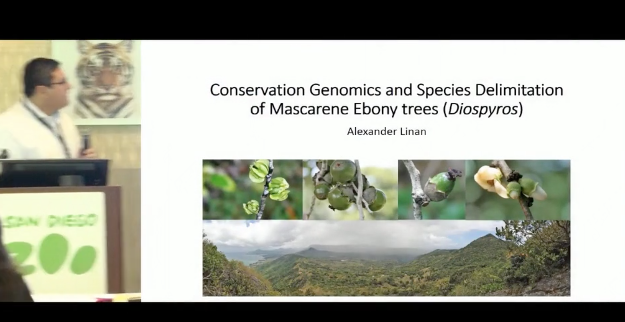
Alexander G. Linan, Porter P. Lowry II, Allison Miller, George E. Schatz, Jean-Claude Sevathian, Christine E. Edwards, Saint Louis University, Missouri Botanical Garden, Institut de Systématique, Évolution et Biodiversité (ISYEB), Centre National de la Recherche Scientifique/Muséum National d’Histoire Naturelle/École, Pratique des Hautes Études, Université Pierre et Marie Curie, Sorbonne Universités, Donald Danforth Plant Science Center The ebony and persimmon […]
Read More…
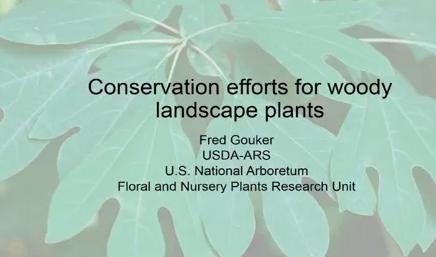
Fred Gouker, Abigail Moore, Kevin Conrad, Margaret Pooler, USDA-ARS U.S. National Arboretum, Floral and Nursery Plants Research Unit, Enviromental and Plant Biology Department, Ohio University Sassafras albidum is a well-known, ecologically important tree that is dispersed throughout the Eastern United States. Its root and bark oil were commonly used as a flavoring agent for many products […]
Read More…

Dr. Stephanie Steele, San Diego Zoo Global The Torrey pine (Pinus torreyana) is a rare, iconic species that occurs naturally in only two locations in Southern California: in coastal San Diego County and on Santa Rosa Island. The species is of particular conservation concern due to prolonged drought which has increased susceptibility of trees to […]
Read More…
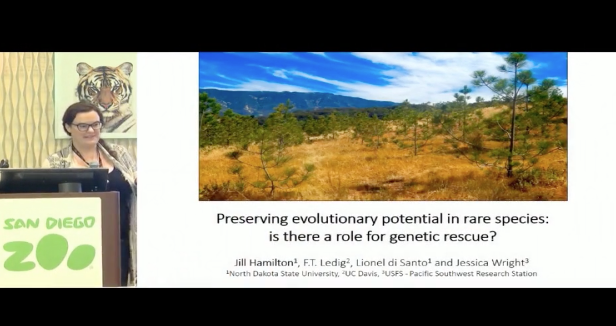
Jill Hamilton, North Dakota State University Species evolutionary potential is tightly linked to both the amount and distribution of genetic variation available through which natural selection may act. Rare species present particular challenges under rapidly changing conditions where the genetic consequences of rarity may limit species ability to adapt to ongoing change. Thus in a […]
Read More…

Kyle L. Gunther, Sula Vanderplank, Jon P. Rebman, Andres Orduño Cruz, & Lluvia Flores-Rentería, San Diego State University, San Diego Natural History Museum, San Diego Zoo Global, Centro de Investigaciones Biológicas del Noroeste California and the Baja peninsula are home to high levels of floral abundance, diversity, and endemism. Much of this region is part of […]
Read More…
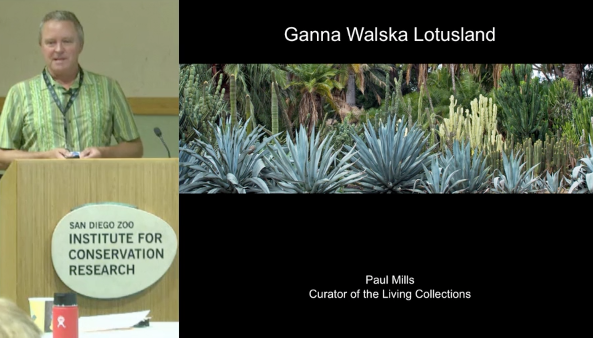
Paul Mills, Ganna Walska Lotusland Ganna Walska Lotusland has many important plant collections, but none are more important from a conservation standpoint than the cycad collection. In the collection there are three mature individuals of Encephalartos heenanii which is now believed to be extinct in the wild. Ganna Walska Lotusland is working with the IUCN […]
Read More…
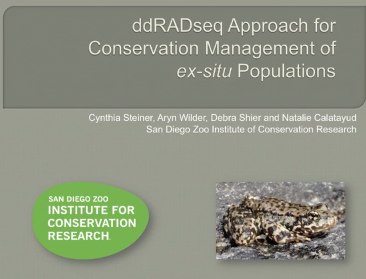
Cynthia Steiner, Aryn Wilder, Debra Shier and Natalie Calatayud, San Diego Zoo Institute of Conservation Research Among the main roles of conservation management is to mitigate the negative effect of anthropogenic activities in nature by ensuring the persistence of biodiversity and species in the wild. Conservation geneticists have recently developed a new toolbox of genomic […]
Read More…
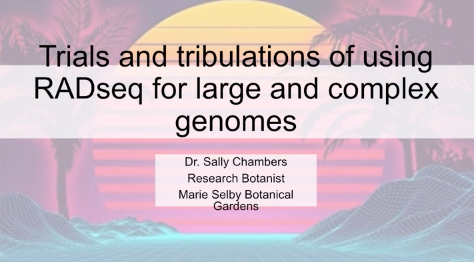
Dr. Sally M Chambers, Marie Selby Botanical Gardens Next generation sequencing technologies have rapidly developed over the past decade, providing new avenues for scientists working on non-model organisms to study patterns at the genome level. Techniques can be used to drastically simplify a complex genome and multiplex samples, which help make these sequencing platforms more […]
Read More…
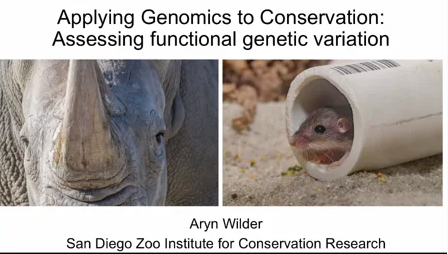
Dr. Aryn Wilder, Institute for Conservation Research, San Diego Zoo Global Human activity has left species worldwide on the brink of extinction, where they are susceptible to the loss of genetic diversity and the accumulation of deleterious mutations that reduce adaptive potential and increase extinction risk. The application of modern genomic tools allows us to more […]
Read More…
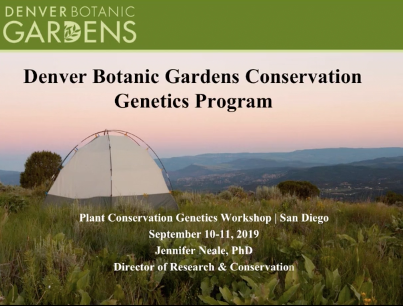
Dr. Jennifer Ramp Neale, Director of Research and Conservation, Denver Botanic Garden The primary objective of research at Denver Botanic Gardens is the conservation, preservation, and documentation of native Colorado flora by serving as an active center of biodiversity research for the Southern Rocky Mountain region. In order to fill a gap in botanical expertise […]
Read More…
















